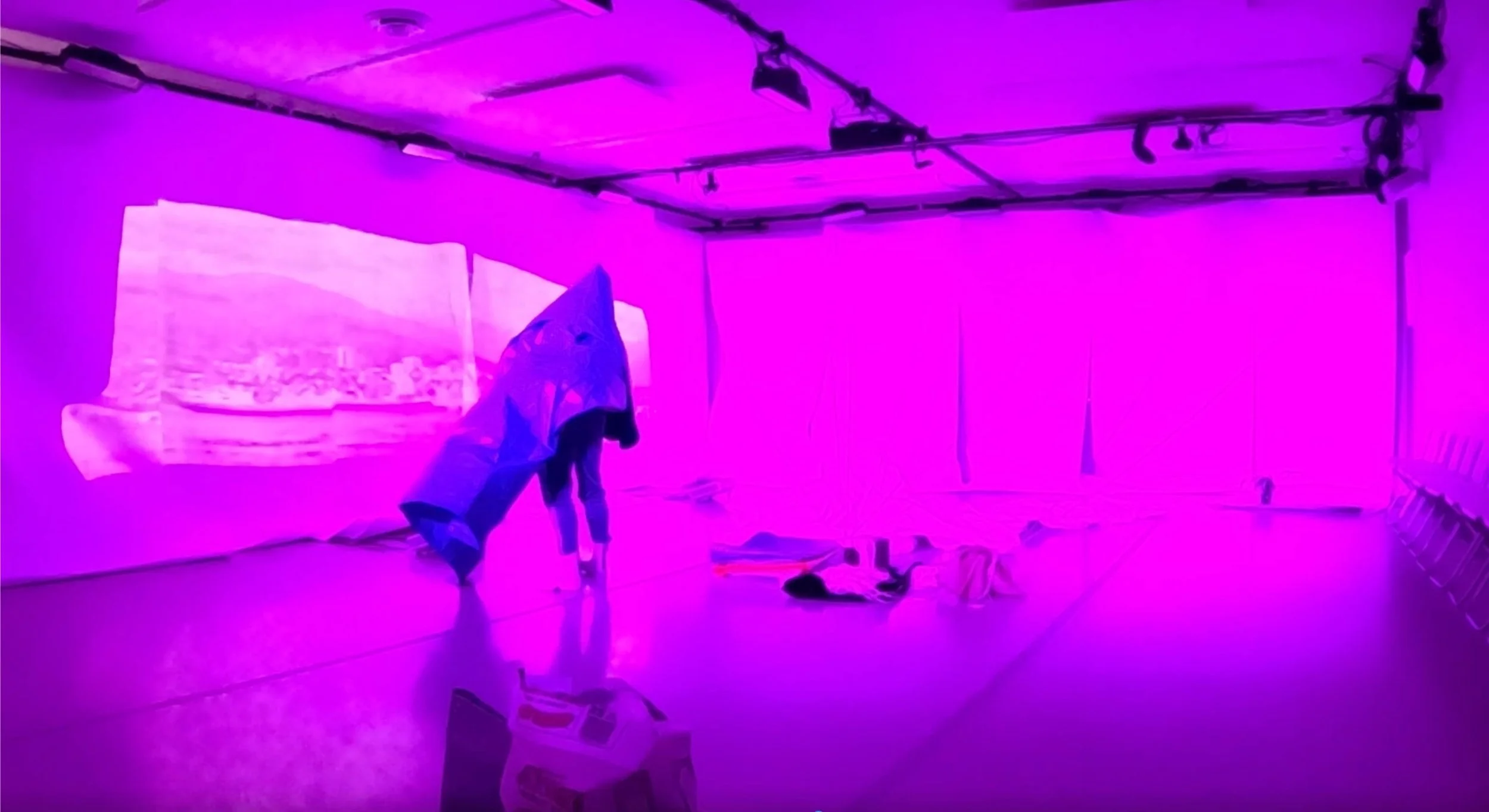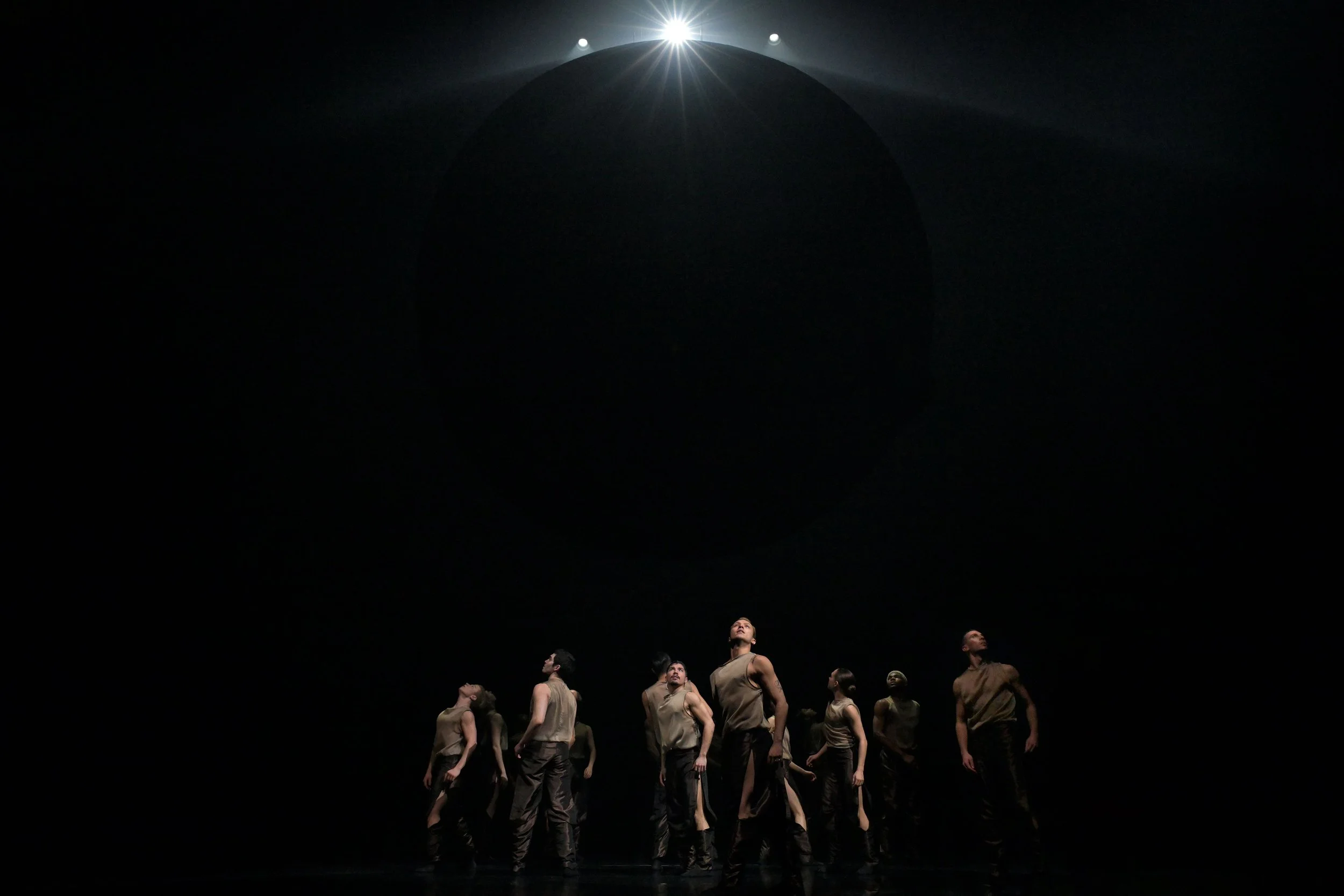Stir Q&A: Dance artist Natalie LeFebvre Gnam draws from interviews from 23 artists in The Door Project
Multidisciplinary work incorporates bird song, club beats, Tyvek, rocks, and more at Left of Main, care of plastic orchid factory
The Door Project. Photo by Victor Tran
Plastic Orchid Factory presents The Door Project at Left of Main, (211 Keefer Street, 2nd floor) on June 23 at 7 pm and June 24 at 4 pm
PLASTIC ORCHID FACTORY is staging a new multidisciplinary work that marks the Summer Solstice in a reflective way, all in the intimate, immersive space at the company’s Left of Main in Chinatown.
Through an intense interview process with more than 20 artists, the company’s artistic producer Natalie LeFebvre Gnam has been building the work for the past two years. The production, with a soundscape by Ahmed Khalil, lighting by James Proudfoot, media design by Jack Chipman, and a costume concept Natalie Purschwitz, is finally set to debut June 23 and 24, with Gnam performing.
Stir talked to longtime Vancouver dance artist Gnam about the project’s growth out of deep pandemic times, the “medicine” that our world needs now, and a sonic and visual design that draws on everything from Tyvek to club beats. Fittingly, we ask her five questions about a process that included asking artists five questions; read on.
How did the piece originate?
The seed for this work was planted by Chris Bose, a multidisciplinary artist from the N’laka’pamux and Secwepemc Nations, over two years ago, during deep lockdown.
I met Chris in December 2019, at a reading for his book N’shaytkin, and we have been in conversation ever since. Chris proposed this project for plastic orchid factory to produce, and over the months and years that ensued, the long, unpredictable pandemic time added a layer of complexity that helped shape the work.
Originally, the idea was to collect migration stories: journeys people took from small, rural places to big, urban spaces in order to find what Chris refers to as “a door to destiny”. But quickly the proportion expanded and I found myself gratefully in conversations with folks where the points of origin were many and vastly different. The Door Project as I feel it now is about being in service of tales of transformation, passages through a “door to a new destiny, growth and renewal”.
How did you structure the interviews, with what you've described as building an environment of care and "deep listening"?
I’m so honoured to have spent time with 23 generous, remarkable humans as they answered five Proust-like questions.
To begin, each interviewee was asked to locate a moment in their memory when they “passed through a door to a new destiny”, a moment in their life where transformation or change occurred. The questions I ask about this moment relate to sensation, weight, rhythm, and bundle-making. While these were conducted as interviews, the process felt more like a vibrant exchange. It was very important for me to ensure everyone felt safe to share and had agency to shape their answers as they liked, with as much or as little detail as desired. I don’t use any of the recorded footage in the show, to preserve anonymity.
The practice of care and deep listening is how we worked with the material and what kind of process we used to create the work. We are honouring and respecting each story, bringing elements from each into the space without being literal or exposing identity. There are purposefully no discernible narratives or throughlines. We are holding each story as you would a cactus. This is something Lee Su-Fee, who is a creative consultant on the project, talks about, and it felt incredibly important to practise this while making this work.
Ahmed, James P, Jack, and I have been in a practice of play and deep listening, using our respective medium to introduce elements, then responding in real-time to each other to evolve them. Over time, we kept listening and the work began to reveal its shape to us. In many ways, the stories have transformed our explorations and collaborative rhythm.
What were the biggest revelations and connections when you looked back at those 20 interviews?
It has been a gift to be witness to these stories and when I look at the accumulated content I see loss, grief, heartbreak and struggle. Then vulnerability, courage, risk and an enormous amount of resilience rising up to meet the difficulty. What transcends is gratitude, joy, awe, rediscovery, and so, so much love; values and teachings, the medicine, that I believe our world needs now. I sure do.
How did the memory of those conversations inspire your unique movement in this piece?
I seem to be very interested in having a set of “house rules” for a process. For this work, it was about only dancing from the materials of the interviews. I spent many hours listening to each interview and dancing my responses. It was interesting to me to stay longer than I thought possible inside of the movement, to wait for the obvious to transform and become something that embodied me. This is a practice I carry with me into the performances.
What kind of visual and sonic world surrounds you in The Door Project?
Much like the dancing, the visual and sonic world is shaped by listening and responding to openings offered by the material. Each of us has a language in the space and these fold in and out of and support each other in ways that create different states and a kind of playful, asynchronous dramaturgy. Practically speaking, the work spans elements from the natural world to urban settings, bird songs to house club scene, all shaped and held by a world of Tyvek, rope, rocks and living plants and trees.














